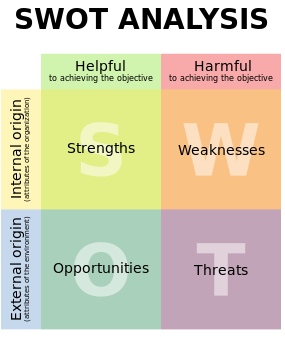eDiscovery Daily Blog
Got Problems with Your eDiscovery Processes? “SWOT” Them Away: eDiscovery Best Practices

Having recently helped a client put one of these together, it seemed appropriate to revisit this topic…
Understanding the internal and external challenges that your organization faces allows it to approach ongoing and future discovery more strategically. A “SWOT” analysis is a tool that can be used to develop that understanding.
A “SWOT” analysis is a structured planning method used to evaluate the Strengths, Weaknesses, Opportunities, and Threats associated with a specific business objective. That specific business objective can be a specific project or all of the activities of a business unit. It involves specifying the objective of the specific business objective and identifying the internal and external factors that are favorable and unfavorable to achieving that objective. The SWOT analysis is broken down as follows:
- Strengths: characteristics of the business or project that give it an advantage over others;
- Weaknesses: are characteristics that place the team at a disadvantage relative to others;
- Opportunities: elements in the environment that the project could exploit to its advantage;
- Threats: elements in the environment that could cause trouble for the business or project.
“SWOT”, get it?
From an eDiscovery perspective, a SWOT analysis enables you to take an objective look at how your organization handles discovery issues – what you do well and where you need to improve – and the external factors that can affect how your organization addresses its discovery challenges. The SWOT analysis enables you to assess how your organization handles each phase of the discovery process – from Information Governance to Presentation – to evaluate where your strengths and weaknesses exist so that you can capitalize on your strengths and implement changes to address your weaknesses.
How solid is your information governance program? How well does your legal department communicate with IT? How well formalized is your coordination with outside counsel and vendors? Do you have a formalized process for implementing and tracking litigation holds? These are examples of questions you might ask about your organization and, based on the answers, identify your organization’s strengths and weaknesses in managing the discovery process.
However, if you only look within your organization, that’s only half the battle. You also need to look at external factors and how they affect your organization in its handling of discovery issues. Trends such as the growth of social media, and changes to state or federal rules addressing handling of electronically stored information (ESI) need to be considered in your organization’s strategic discovery plan.
Having worked through the strategic analysis process with several organizations over a number of years, I find that the SWOT analysis is a useful tool for summarizing where the organization currently stands with regard to managing discovery, which naturally identifies areas for improvement that can be addressed.
So, what do you think? Has your organization performed a SWOT analysis of your discovery process? Please share any comments you might have or if you’d like to know more about a particular topic.
Graphic source: Wikipedia.
Disclaimer: The views represented herein are exclusively the views of the author, and do not necessarily represent the views held by CloudNine. eDiscovery Daily is made available by CloudNine solely for educational purposes to provide general information about general eDiscovery principles and not to provide specific legal advice applicable to any particular circumstance. eDiscovery Daily should not be used as a substitute for competent legal advice from a lawyer you have retained and who has agreed to represent you.
